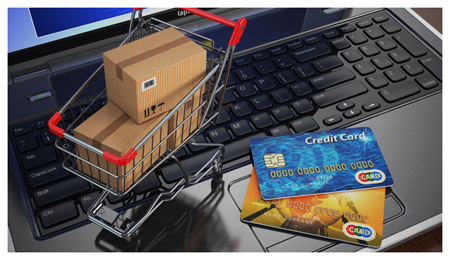As more and more resources become available for the consumer, their behaviour pre-purchase has changed and whether it’s for the better or worse is a whole other conversation. What is trending more and more is when buyers and sellers interact purely over an electronic medium, typically the internet. These exchanges are most commonly transactions between companies and consumers, wherein consumers purchase products and services.
In December 1995, only 4% (16million) of the world population used the internet. Fast forward to today and the most recent information available reveals in late 2015 over 46% (7 billion) of the world population now uses the internet*. With the amount of people browsing the internet on a daily basis, what steps do you have in place to maximise the number of sales opportunities?
In 2015, there was $82 million of gross merchandise sold on eBay alone. We’re unable to say the exact conversion figure however on a daily basis over 250 million searches are done through their website and mobile application.
Whilst there are many pieces to the e-commerce puzzle and the statistics behind online traffic and marketplaces is one thing, what is clear is the business to consumer channels are moving in a consistent direction. There’s been a significant amount of businesses lately moving away from a traditional shopfront which included a high level of customer service and implementing a stronger online shop, help desk and warranty process. A few people may be thinking this transition may increase the rate of unemployment, however, do the consumers of today, with all the research tools and ‘great online deals’ demand this new requirement from their favourite brands?

Every day, more and more products are entered into the market at the lowest possible price before the, “would you like fries with that?” add-ons are thought about. Base model quality is improving and margins are dropping due to the competitiveness of the market, a price to pay to get your brand out into the market to be eligible for product reviews, comparisons, and recommendations for further business.
It’s not necessarily a new strategy into the price segment of the marketing mix for a brand.
If we use the automotive parts industry as an example, suppliers need to be looking to expand their distribution network across a wider and wider landscape. Consumers are willing to shop around if they know the part numbers match up, and the growing trend in dealerships to increase profitability through selling unused parts is in full swing. This ‘trend’ has been growing for some time now in the foreign markets, allowing customers to purchase a part from anywhere and everywhere. The more sought-after parts are being shipped all around the globe. Considering the ease of communication and worldwide transport options, there’re no real surprises here, unless you’re not currently involved.
Previously, before global trading was common practice, an international order would be received and the order snubbed because of the difficulty sending to another country. This is now no longer the case. The long process of selling automotive parts online has been reduced due to a reduction in a number of administration tasks.

Take our own automotive e-commerce software solution, for example, Handle. The seamless integration directly into the DMS allows all of the behind the scenes data integration to be taken care of with ease. A customer’s information is integrated into the DMS, shipping label created and picking slip ready for the warehouse regardless of what online shop, portal or payment system the customer is using. With solutions making the process this simple, it’s no wonder more and more businesses are creating their own piece to join the puzzle.
The e-commerce puzzle is forever changing the way sales are conducted. Businesses are growing their distribution networks and forever increasing their global reach, establishing not only their brand but their capabilities to the market. What size piece does your business have within the global puzzle?
